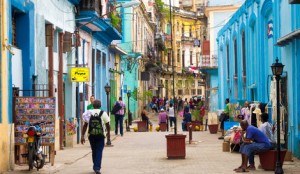
Time to invest in Cuba?
By Eduard van Nes
What are the things that spring to mind when the country Cuba is mentioned? Communism, Fidel Castro or perhaps Cuban cigars. Maybe some will think of the embargo with the US, Ché Guévara or even the Buena Vista Social Club, but very little will think about the economic opportunities that the Caribbean island by the US coast has to offer.

This is partially because there is very little access to direct investment, but more probably because for years, decades, Cuba has been associated with communism, and therefore, not open for business.
Times are changing though. Ever since Raul Castro took over the presidency, small but meaningful changes have been taking place. To start with, foreign investment is being welcomed again, albeit on a 50-50 percentage ownership basis with the government.
Daily flights to Miami have reopened access for relatives with US dollars to return to the island. People have also received the right to sell their homes again. And Cubans can now start their own business and, for instance, open a privately-held restaurant (called a ‘paladar’).
This may seem like a small change but it really is a leap forward for Cuba. It creates opportunities for entrepreneurs and sets the foundations for a new middle class to emerge in the future.
And let’s look at a more public display of economic potential. Last month, Mexico cut the Cuba’s debt burden with them by 70 per cent. This can be seen as a friendly neighbour’s gesture. However, a haircut like this usually only happens under extreme circumstances. It can more probably be considered as an investment made by the Mexican government.
Considering the proximity and the potential, it most definitely can. The Mexican brewer, Grupo Modelo (parent company AB Inbev, ABI:BB), is already present in Cuba with its main export Corona but also Coca-Cola – through its Latin American subsidiary FEMSA, (COCSF:US).
These two brands are not the only ones, and there are many waiting in line to ship their goods to the new Cuba.
A couple of other large ‘local’ investors are hotel chains Mélia (MEL:SM) from Spain and it’s French competitor Accor (AC:FP). Both seem to be quite keen to profit of one the last potential big growth spots in the Caribbean. And the French are growing their presence by filling the streets with its Peugeot 206 model, albeit 2004 models (UG:FP). It appears the French have understood what is about to happen.
With a local presence of around 3000 expats the French seem to have a small edge on the rest of the world. Through Pernod Ricard (RI:FP) they, along with the government, are 50 per cent joint owners of Cuba’s most popular alcoholic drink, Havana Club.
An abundance in supply of sugar makes rum the most produced liquor in Cuba and there are many brands, mostly owned by the government (or at least the official ones are).
However, Pernod Ricard’s marketing and logistics expertise has made Havana Club the best sold brand and in recent years it has flooded the local bars, hotels and restaurants.
Another big presence in Cuba are the Canadians. Not so much for their products, but for their resorts and lifestyle which have taken over parts of Cuba – such as the staggeringly beautiful Cayo Santa Maria.
It probably won’t be too long before other major holiday destination companies begin talking to the Cuban government, if indeed this hasn’t already happened.
The US embargo against Cuba started way back in 1960, and recently, US President Barack Obama outlined a number of steps Cuba must take for it to be lifted – one of them being having democratically elected president.
Although nobody can guarantee the embargo will be lifted in 2014, there are grounds for optimism – witness president Obama’s and president Castro’s brief handshake at Nelson Mandela’s memorial recently.
(From growthbusiness.co.uk)

